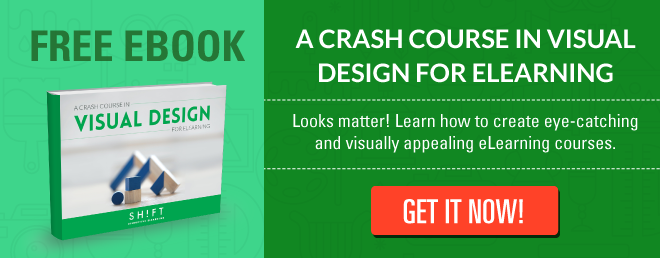Picture this: You're cozied up in your favorite chair, laptop ready, diving into an eLearning course with the hope of gaining new insights and skills. But instead of a seamless flow of learning, you hit a wall — a wall of text, images, and endless bullet points that seem more like a virtual avalanche than an educational experience. You're not alone if you find yourself feeling lost in the flood of 'content infoxication' that has become all too common in online courses today.
It's an unfortunate truth that eLearning can sometimes feel less like a well-crafted journey and more like an information dump, leaving learners feeling more like they're sifting through a cluttered attic than walking through a well-organized museum. The distinction? It's all about strategy.
The art of eLearning isn't in the volume of what's presented; it's in the careful curation and presentation of content. Your courses should not resemble a hoarder's haven of information.
This content infoxication — the overindulgence in and overreliance on excessive amounts of data — can cloud judgment, overwhelm senses, and paralyze decision-making. In your eLearning design, it's imperative to avoid the pitfalls of packing too much onto one screen. Like a chef who knows that the right balance of spices can perfect a dish, you must strategically select not just what to present but how to present it for maximum effectiveness.
Remember, an eLearning course is not a race to show all you know; it's a carefully designed experience meant to engage, enlighten, and empower. As we craft these digital learning experiences, we need to respect the learner's cognitive bandwidth — creating spaces that allow for reflection and absorption, not just reception.
To ensure your content is meaningful and memorable, we'll share some golden rules to navigate through the maze of content creation without falling into the trap of overloading your learners. By the end of this guide, you'll be equipped with the strategies to ensure your eLearning is impactful, engaging, and most importantly, effective in enhancing workplace performance.
1. Create Clear Headlines
Let's talk about the importance of clear headlines in your course content. Vague titles like "Introduction" or "Challenges" don't cut it. They don't tell learners what to expect or what they're about to learn. A great headline catches attention and encourages learners to engage.
For example, instead of a boring "Benefits" section, try something like "3 Surprising Benefits of Learning a New Language." This makes the content more attractive and clearly conveys what learners can expect to gain from the section.
But it's not just about attracting attention – clear headings also make the learning process more efficient. Studies have shown that learners perform better when content is organized with clear headings and outlines (The Signaling Principle).
By breaking down your content into clear sections, you help learners understand and retain information more effectively. So when you're creating your eLearning content, make sure to put in the effort to craft clear and engaging headlines. Your learners will thank you for it!
Recommended read: How To Avoid Designing Cluttered eLearning Screens
2. Avoid Splitting Focus
When creating eLearning content, it's important to avoid splitting learners' focus. This means that if you're using visuals to supplement your explanatory text, make sure they're located close to each other on the same screen.
Having related information on two different screens can cause information overload and make it more difficult for learners to understand the material. It's important to keep in mind that learners have limited working memory and can only process a certain amount of information at once.
To avoid splitting focus, here are a few actionable tips:
-
Keep related text and visuals on the same screen: Make sure that any images, videos, or other visual aids are placed near the text they relate to.
-
Use captions or labels: If you have multiple images or visuals on a screen, use captions or labels to help learners understand what they're looking at.
-
Use a consistent design: Consistency in design helps learners anticipate what will happen next and where to find important information. Use the same layout, color scheme, and font throughout your course to make it easier for learners to follow along.
-
Minimize distractions: Avoid adding unnecessary elements that could distract learners from the main content. This includes flashy animations or graphics, as well as excessive use of sound effects.
Also read: Don't Frustrate Your Learners! 7 Rules for Creating User-Friendly eLearning
3. Eliminating Unnecessary Elements
When creating eLearning content, it's important to eliminate any unnecessary elements that don't support the main idea. While it can be tempting to include lots of information to ensure learners have a complete understanding, this approach can actually be counterproductive.
Research has shown that people learn better when extraneous material is excluded rather than included. This is known as the Coherence Principle, which states that unnecessary information can interfere with the learning process and lead to cognitive overload.
According to a study by Kaltura, 89% of students said that they wished their instructors would focus more on providing clear and concise content in their courses.
Eliminating unnecessary elements can also help learners focus on the most important information and improve their overall understanding of the material. But how do you know what elements to eliminate?
Here are 5 questions eLearning designers can ask to identify unnecessary content in their eLearning courses:
-
Does this content align with the course objectives? One of the main reasons for including content in an eLearning course is to support the learning objectives. If the content doesn't align with the objectives, it may be unnecessary.
-
Does this content add value? Consider whether the content provides additional value to the learner's understanding of the topic. If it doesn't add value, it may be unnecessary.
-
Is this content redundant? Check to see if you have already covered this information in another part of the course. If it is redundant, it can be removed.
-
Does this content confuse or overwhelm learners? If the content is complex or difficult to understand, it may be unnecessary. Simplify the content or remove it altogether.
-
Does this content support the main ideas of the course? Each piece of content should contribute to the main ideas or concepts being taught in the course. If it doesn't support the main ideas, it may be unnecessary.
Studies have found that learners perform better when extraneous material is excluded rather than included. (Coherence Principle)
Also read: 5 Rules for Creating Relevant and Fluff-free Courses
4. Provide Job Aids
When designing eLearning courses, it's important to consider how learners access and retain information. With most people now navigating on their mobile devices and relying on search engines for long-term storage, job aids have become essential tools for learning and retaining information.
To improve learning outcomes, try to include job aids in your eLearning courses. Job aids are simple, easy-to-digest tools that help learners apply what they've learned in real-world scenarios. Examples include checklists, reference guides, lesson summaries, FAQs, and searchable definitions of key terms.
Here are some actionable strategies for providing effective job aids in your eLearning courses:
-
Make them easily accessible: Ensure that job aids are easy to find and access within the course. Consider placing them on the main menu or in a sidebar for easy access.
-
Provide clear instructions: Give learners clear instructions on how to use the job aid and what information it contains. Use visuals, like icons or images, to help learners understand how to use the job aid.
-
Use scenarios to demonstrate their use: Provide learners with a scenario in which the job aid would be useful. This will help them see the practical application of the information and encourage them to use the job aid in the future.
-
Test learners' knowledge: Use quizzes or assessments to test learners' understanding of the information contained in the job aid. This will help reinforce the information and ensure that learners have retained it.
5. Use Cues Strategically
Using cues is an effective way to help learners focus on essential content in eLearning courses. Bold vocabulary terms, red circles, underlining, and highlighting are all examples of cues that can direct learners' attention to key information.
Studies show that highlighting key terms and emphasizing on-screen elements helps learners build a relationship between must-know information and supporting information. By incorporating cues effectively, you can help learners focus on the most important content and improve their overall understanding of the material.
Here are some actionable tips for using cues effectively in your eLearning courses:
-
Use color strategically: Choose colors that are visually appealing and help to differentiate important information from less important information. For example, use a bright color for key vocabulary terms and a muted color for supporting information.
-
Use visuals to enhance cues: Incorporate images, icons, or other visual elements to enhance the impact of your cues. This can help to draw learners' attention and reinforce important information.
-
Keep it simple: Avoid overusing cues or adding too many distractions. Stick to the most important information and use cues sparingly to avoid overwhelming learners.
Also read: These Are The Reasons Why Learners Forget Your Training
What are some other ways you've found to avoid overload?



